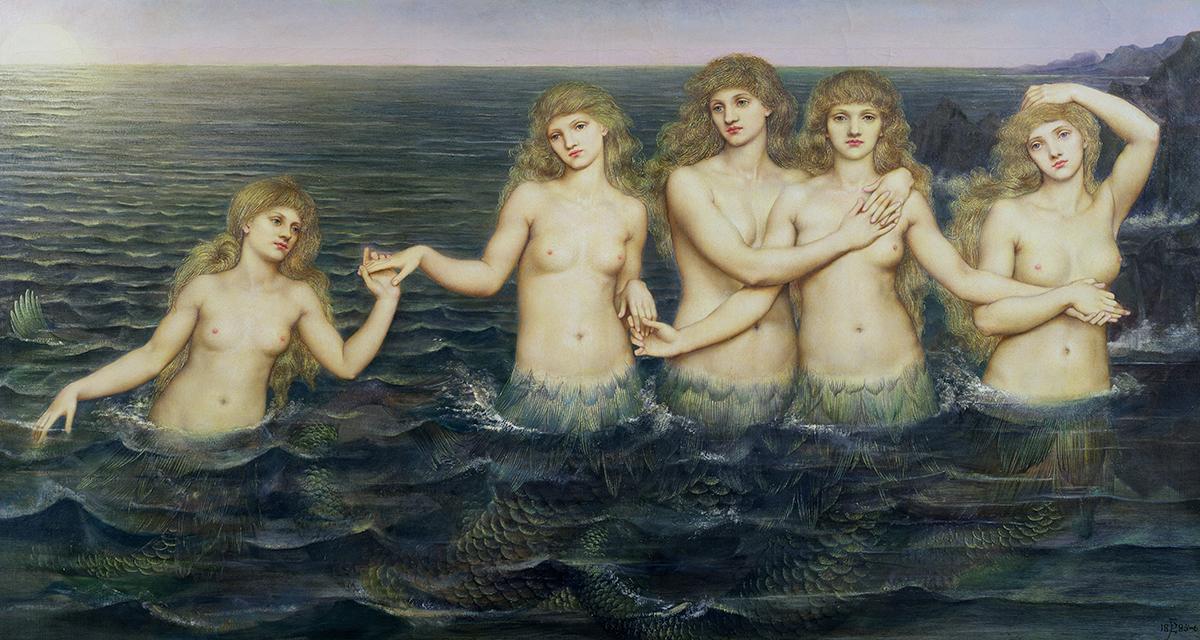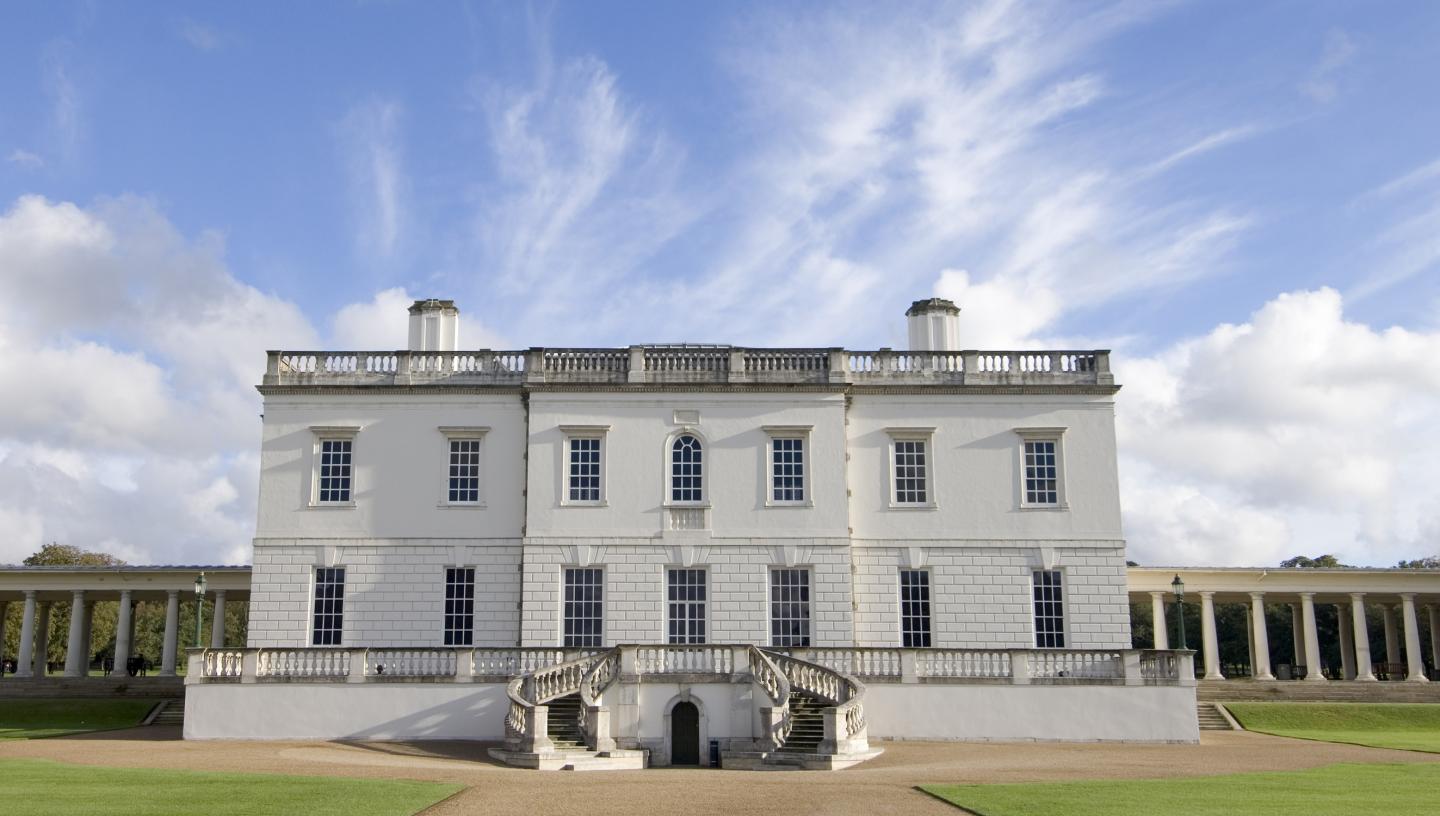
25 Mar 2019
Using the Museum's collection to inspire a new body of work, these groundbreaking artists re-examine the collections and their histories
In 2016 The National Museum of Women in the Arts asked the question, 'Can you name five women artists?' This question kick-started a global hashtag, leading people to share and champion the work of female artists. We are focusing a spotlight on five women artists whose work is on display at Royal Museums Greenwich.
Marian Maguire
Marian Maguire’s work draws upon Greek mythology, and the colonial history of New Zealand. Using lithographs and the traditional Greek vase, she blurs time and space to question the established narrative of British colonialism in the Pacific.
Prints from her series Labours of Herakles are on display in the Queen’s House. The series of lithographs and etchings tells the story of ancient Greeks attempting to settle in the New Land. It follows on from The Odyssey of Captain Cook, setting the archetypal hero as a New Zealand colonist. Maguire mixes colonial prints with design of Maori wood carvings and Greek black figure pottery.
Discover more of Maguire's work
Tania Kovats
The hand painted ceramic tiles of Tania Kovats’ Sea Mark are suggestive of a seascape. By glazing and firing the tiles, Kovats keeps the brushwork visible, evoking the motion of the sea. The repeated pattern creates a meditative feel for the viewer, similar to Kovats' practice.
Using traditional genres and materials, Kovats’ work focuses on humanity’s relationship with nature, and how this is becoming increasingly fraught.
Tacita Dean
One of the Young British Artists, Dean works primarily in film and was nominated for the Turner Prize in 1998.
Her work on display at the National Maritime Museum focuses on what was left behind by Donald Crowhurst, after the Sunday Times Golden Globe yachting competition. Crowhurst was an amateur sailor and struggling businessman, who staked his business on winning the race. Soon into his solo sailing mission he realised how ill-equipped and under prepared he was. He reported false co-ordinates, claiming to be further along in the race than he was.
The discovery of this was soon followed by his disappearance. It is thought that he died by suicide.
His trimaran, the Teignmouth Electron, is beached on the Caribbean island Cayman Brac. In 1989 Dean travelled to the remains of the boat, sympathetically photographing it and documenting the story of the abandoned boat. These photos can be seen on display in the Queen’s House.
During his time alone on the ship, Crowhurst kept diaries. These diaries and their entries suggest a downward spiral of his mental health. His last entry ‘It is the mercy’ inspired Dean’s carving on display in the National Maritime Museum.
Find out more about Donald Crowhurst
Christy Symington
A member of the Royal Society of Sculptors, Christy Symington’s work champions the achievements of overlooked historical figures. The sculpture below depicts Olaudah Equiano, a key figure in the abolitionist campaign.
Born in what is now south-eastern Nigeria, Equiano was sold into slavery around the age of 11. After being shipped to Barbados and working on a plantation in Virginia, Equiano was sold to a British Royal Navy officer. Equiano’s final master, the Quaker merchant Robert King, allowed him to buy his freedom.
Equiano documented his experiences in his autobiography The Interesting Narrative of the Life of Olaudah Equiano, one of the first books in Europe by a Black African writer.
Made in 2006, Symington’s sculpture tells the story of Equiano’s remarkable life and legacy. Equiano’s role as an abolitionist is referenced in the chains and shackles that wind around the back of the sculpture. Details of the ‘Brookes’ slave ship diagram – an image that represents how enslaved people were crammed into ships that crossed the Middle Passage – can be seen around the sides of the work. The shape that forms the back of Equiano's shoulders implies the continent of Africa.
Symington’s sculpture is on display in the Queen’s House.
Discover more contemporary art in the Queen's House
Evelyn de Morgan
The Sea Maidens depicts five women standing half submerged in the water.
Created as a response to Hans Christian Anderson’s The Little Mermaid, the painting depicts a vision of femininity, but also strength, power and sisterhood.
The model for all five of the women depicted in the painting was Jane Hales, de Morgan’s maid.
Influenced by the pre-Raphaelite movement, de Morgan mostly depicted women. She was a pacifist, and worked closely with the suffrage movement.





